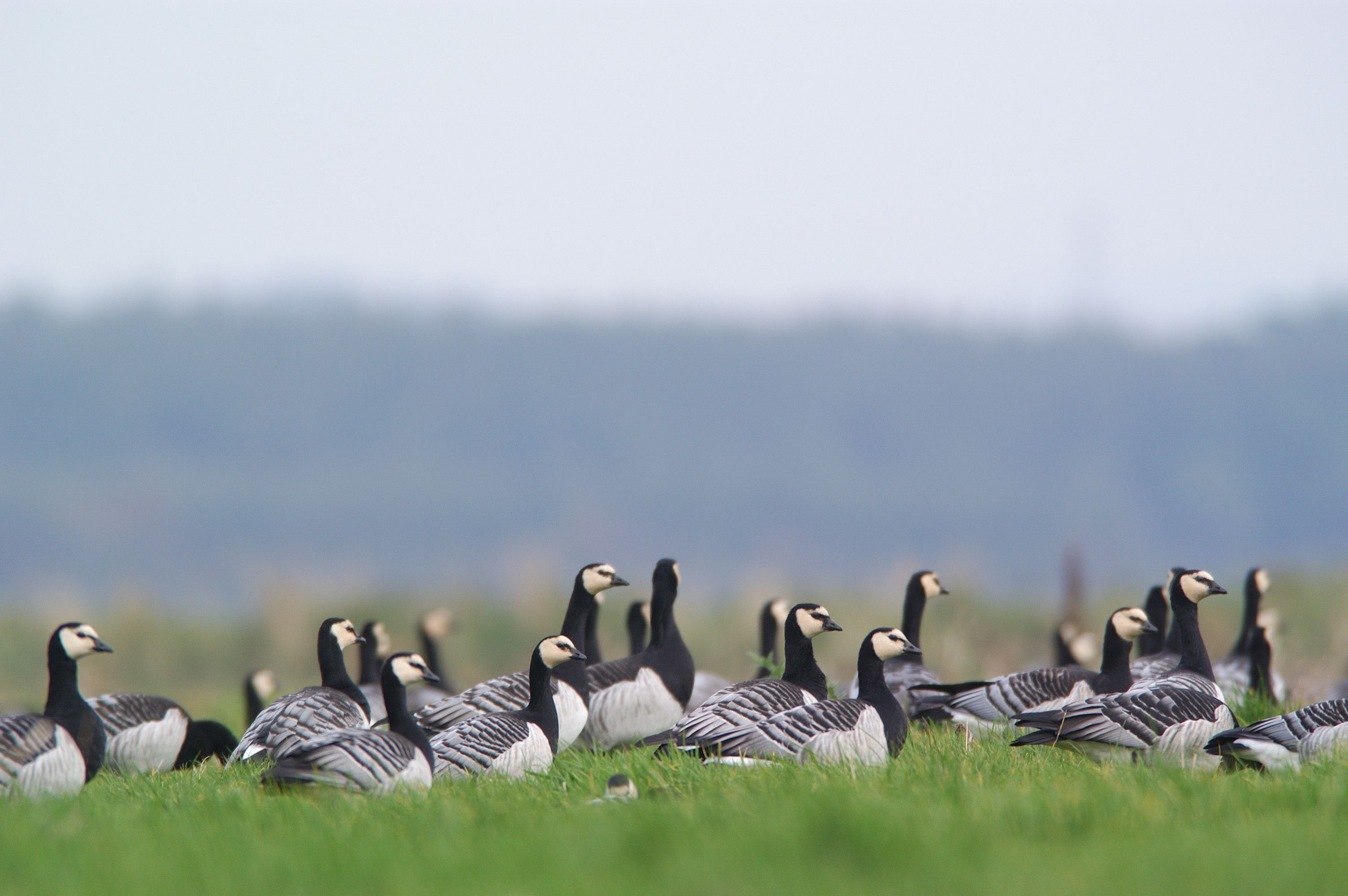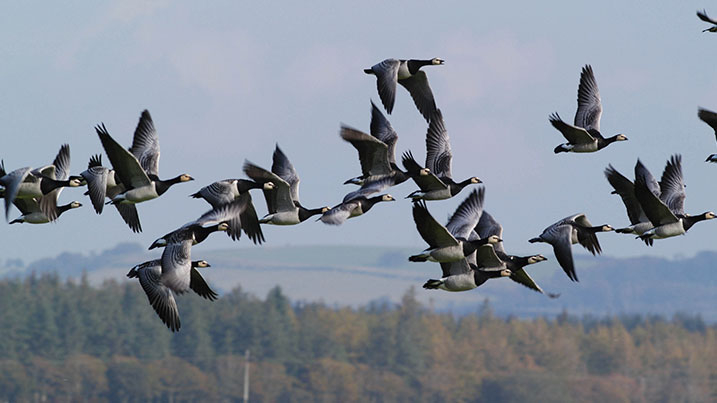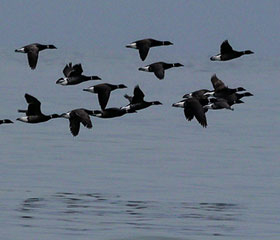Rising temperatures are triggering changed responses in animal populations in the Arctic, new data shows
The Arctic is in the process of entering a new ecological phase, which potentially carries a huge cost for humanity. WWT have taken part in a global study to shed light on how climate change might be affecting high Arctic species.

Rising temperatures are triggering changed responses in animal populations in the Arctic, which could have huge ramifications for the future of the northernmost region on earth.
The findings are explored in a new scientific paper Ecological insights from three decades of animal movement tracking across a changing Arctic, which is published in the prestigious journal Science.
The data has been collected in a new Arctic Animal Movement Archive (AAMA), a collection of 201 terrestrial and marine animal tracking studies, spanning 21 years and growing. It includes the tracking data of high-Arctic wetland birds, supplied by conservation charity WWT.
This data visualisation shows the movements of Arctic species across this vast wilderness
WWT’s Research Officer Kane Brides contributed to the study. He said:
“The Arctic is in the process of entering a new ecological phase, which potentially carries a huge cost for humanity.
“However it can be difficult to track these changes and their impact on the different species that inhabit these huge expanses which include barren land, Arctic seas and Boreal forests.
“The creation of the AAMA facilitates research and insights into the changing behaviour of Arctic species, preserving critical baseline data for the future. It’s great to see that WWT tracking data is being utilised and made available to be used to address urgent issues surrounding the Arctic.”
Nowhere else on earth are experts seeing such rapid changes than in the Arctic where the primary cause, greenhouse gas emissions, are instigating warmer winter temperatures and ice loss, affecting the availability of food, competition and predation of animals. Experts are noticing differences in seasonal vegetation and changes in migration and foraging.
As part of this global study, WWT have shared vast amounts of data collected on high-Arctic wetland birds including the Svalbard and Greenland barnacle geese which the trust’s Principal Species Officer Larry Griffin has been tagging since 2006.

Barnacle geese returning to the Solway Firth in the UK have been arriving with an ever decreasing amount of young over the last decade. This is likely due to a combination of factors including increased predation of island nests by polar bears now unable to feed on seals as effectively, and also due to a decoupling of the rate of vegetation development across staging and breeding sites. Even though the geese try and arrive on their breeding grounds earlier each year, sometimes foregoing the traditional staging sites, the fresh vegetation source they need for their young is maturing too swiftly prior to hatch under the changing climate.
Warmer autumns can also throw migratory schedules into turmoil. When Greenland white-fronted geese linger in Iceland due to the availability of fresh grass growth on the improved pastures and arable stubbles under the warmer conditions, they increasingly expose themselves to illegal hunting or more violent Atlantic storms when they eventually try and make the crossing back to Scotland or Ireland. Tracking and marking data suggest the Taiga bean geese may be staying longer on the continent too or avoiding Scotland all together, simply short-stopping in Denmark for winter instead.
Larry Griffin added:
“These are all big changes that are unfolding each year before our very eyes as we process the tracking data of these birds.
“The AAMA endeavour is about leveraging the power of big data, and increasing sample sizes and cross-flyway comparisons, through collaborative study, and bringing concerned scientists and organisations with skills across a variety of research areas together such that a greater analysis and diagnosis of the problems for Arctic species or guilds is possible.
“It’s fantastic that WWT is part of this collective to help us document these environmental changes to the Arctic where the impact of climate change is happening faster and more dramatically than anywhere else in the world.”

Learning about bird movements so we can protect them
If we are to succeed in protecting wetlands, the first step is to have a clear understanding of the state of wetland nature, and the pressures upon it.
More about monitoring


